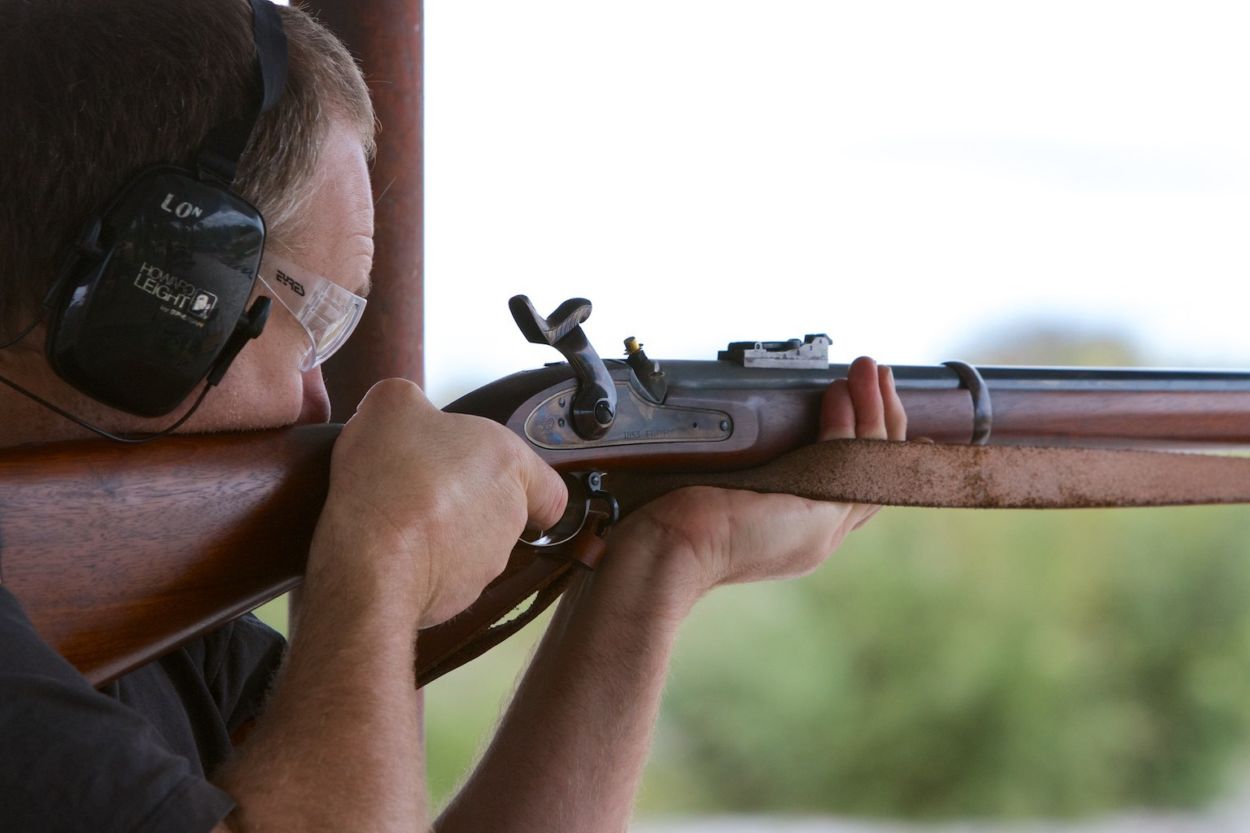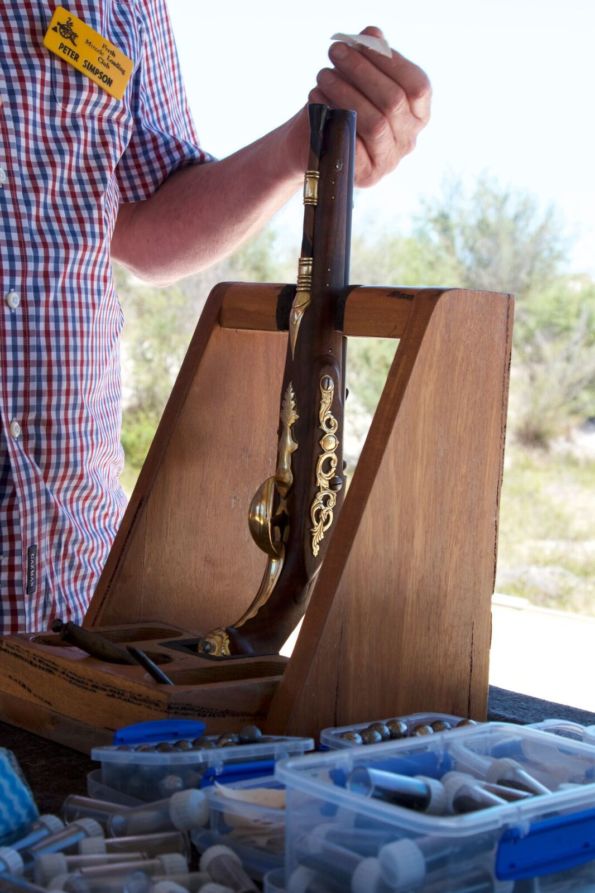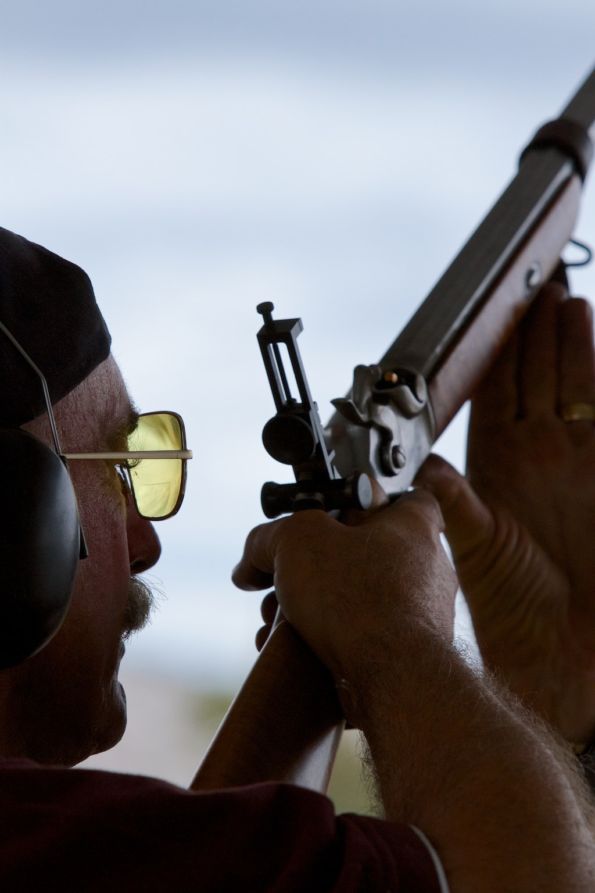Percussion, flintlock, matchlock and wheel-locks are the four types of ignition that can be used to fire a muzzleloading firearm. Historically, this takes us from the earliest practical hand-held firearms up to when smokeless powders replaced black powder. This covers the period from the mid-12th century to 1886 when the French introduced the Lebel rifle using an 8mm bottle-neck cartridge loaded with smokeless powder.
Muzzleloading events are divided into several classes. Each class of rifle is shot from the offhand, cross-sticks/prone and bench rest positions, but there are also events shot in the kneeling or sitting positions.
Class 1
Class 1 (Military) comprises original and replica rifles and revolvers that were issued to troops somewhere in the world. The .577" Enfields and .58" Zouave rifled muskets shooting minié balls and the Colt and Remington cap and ball revolvers without adjustable sights are included. All Class 1 firearms must be as-issued, meaning unaltered from the original firearm.
Class 2
Class 2 (Traditional) comprises traditional or civilian-style percussion rifles or pistols loaded with a ball and patch. Kentucky long rifles and Hawken rifles, as well as muzzle-loading percussion pistols with rifled barrels are included. Flintlocks may be used in Class 2 events, but percussion firearms cannot be used in flintlock events.
Class 3
Class 3 (Open) only requires that the rifle or pistol uses black powder and lead bullets. The firearm must be fitted with iron sights without click adjustment. Cap and ball revolvers with adjustable rear sights fall into this class. Scopes sights are not permitted.
Firelocks
There are several Firelock classes, which permit the use of original or replica muzzleloading military- or civilian-style muskets, rifles, matchlocks, wheel-locks, flintlocks, smoothbore longarm or single-shot pistol. These firearms may be in any calibre, but must shoot round balls only.
Shotguns
There are two Shotgun classes, which permit the use of percussion and flintlock shotguns to hit clay targets.
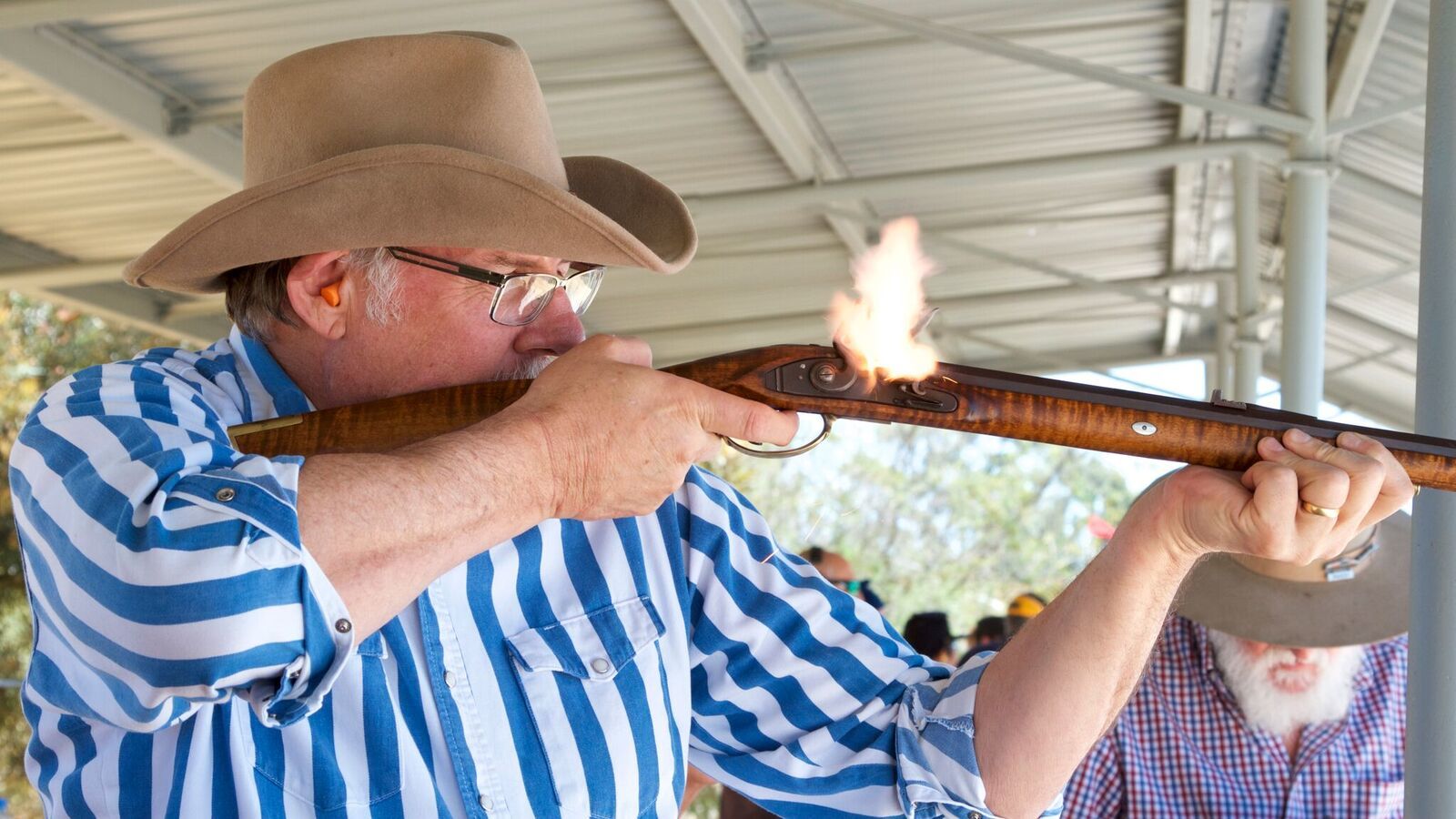
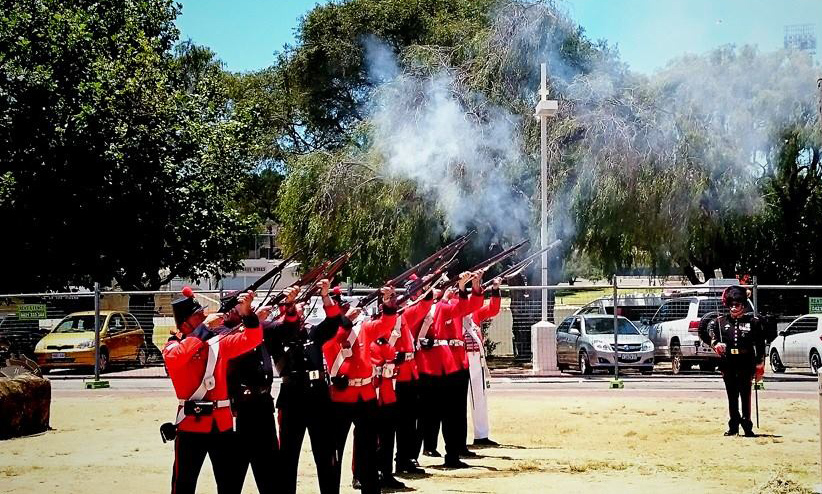 Perth Regiment at SSAA Perth Shot Expo
Perth Regiment at SSAA Perth Shot Expo